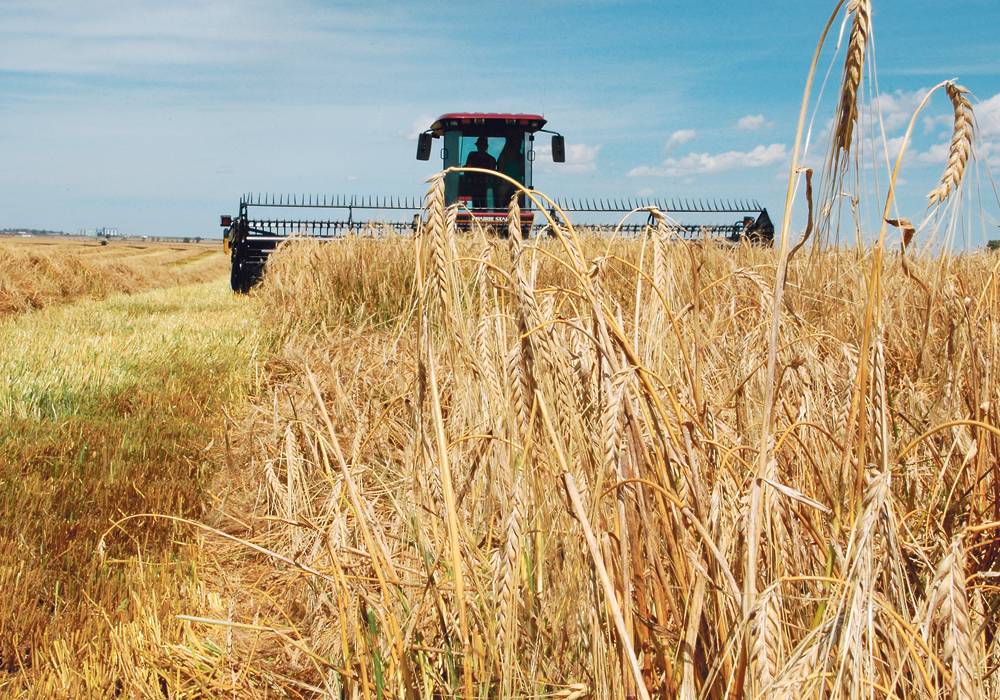China is targeting barley imports from Australia in much the same way that it is restricting Canadian canola seed
China’s politically motivated trade actions are hurting Canadian farmers on canola but benefiting them on barley.
Late last year, China launched anti-dumping and anti-subsidy investigations into Australian barley exports.
Those investigations are curbing sales of the commodity to Australia’s top market because Chinese importers are nervous that tariffs could be implemented at any time.
“The impact has been that the Chinese have been very cautious about buying Australian barley,” said Peter Watts, managing director of the Canadian Malting Barley Technical Centre.
Read Also

Critical growing season is ahead for soybeans
What the weather turns out to be in the United States is going to have a significant impact on Canadian producers’ prices
“It’s probably beneficial to Canada in the short-term.”
Canada shipped 938,500 tonnes of bulk barley to China through the first seven months of 2018-19, according to the Canadian Grain Commission.
GrainCorp, Australia’s largest publicly traded grain company, blamed international trade tensions on an AUS$40 million reduction in earnings for the six months ending March 31, 2019.
The company didn’t name the barley issue specifically, but an Australian grain trader did in a Reuters story.
“The investigation has heightened uncertainty,” said the unnamed trader.
“China is still unloading vessels, but the market is concerned that tariffs could be introduced at any time.”
The Reuters story suggested the investigations are politically motivated.
Tension has been mounting between the two countries over allegations of Chinese interference in Australian domestic affairs and flexing its muscles in the Pacific region and Australia’s attempts to block Huawei from building a 5G network in the country.
“This is a lot like our canola issue,” said Bruce Burnett, director of markets and weather with GlacierFarmMedia’s MarketsFarm.
Many believe China’s ban on Canadian canola is linked to Huawei after Canada detained the company’s chief financial officer at the behest of the U.S.
The other similarity is that China is by far the top buyer of Canadian canola and Australian barley. It accounted for 47 percent of Canada’s canola exports and 77 percent of Australia’s barley exports last year.
Those numbers could change drastically in 2019 as China uses non-tariff trade barriers to bring a halt to Canada’s canola exports.
Australian barley is still being shipped, but importers are nervous amidst reports that China could be slapping an additional 56 percent duty on Australian barley exports.
Burnett said Canada’s primary barley shipping window to China is from harvest until December or January when Australia’s crop comes off.
If Australia’s trade tensions with China linger into 2020 or if China implements the additional tariffs, it would extend that window.
Watts said Canada’s strong 2018-19 shipping program to China also has a lot to do with Australia’s short crop.
Australian farmers harvested 8.3 million tonnes of barley last year, well below the previous five-year average of 9.8 million tonnes.
“I’m sure that has probably been the biggest impact,” he said.
It is why Canada is on pace for record barley exports in 2018-19.
“We are selling a lot of feed barley to places that we haven’t in the past couple of years. This is partly the spillover from Australia’s short crop,” said Watts.
Canada has shipped 252,800 tonnes of barley to Japan through the first seven months of 2018-19, up from 72,700 tonnes the same period a year ago.
It has also sent substantial volumes of feed barley to Kuwait and Oman, two countries that didn’t buy any Canadian barley the previous year.
Burnett said the strong export program is one reason why Canadian growers are planning to increase barley acres by 10.2 percent this spring, according to Statistics Canada.
Agriculture Canada is forecasting 900,000 tonnes of carryout, a 28 percent decrease from the previous year. That is bolstering malt and feed barley prices.
“They haven’t been setting the world on fire, but they’ve been actually pretty good,” he said.
It helps that barley’s acreage footprint often overlaps canola, and growers have indicated they are going to reduce canola plantings by 6.6 percent.
Burnett is forecasting a return to normal barley carryout if growers manage to get trend-line yields, so the increased acres shouldn’t be “hugely negative” for prices.


















